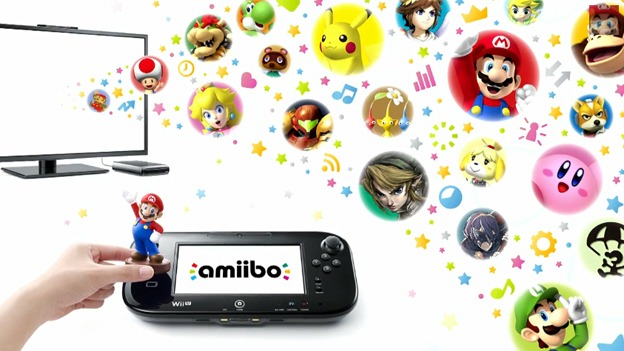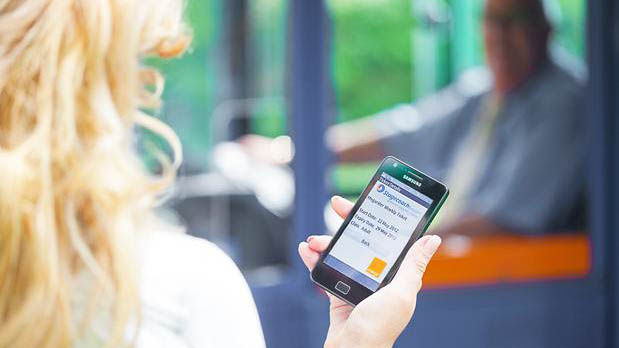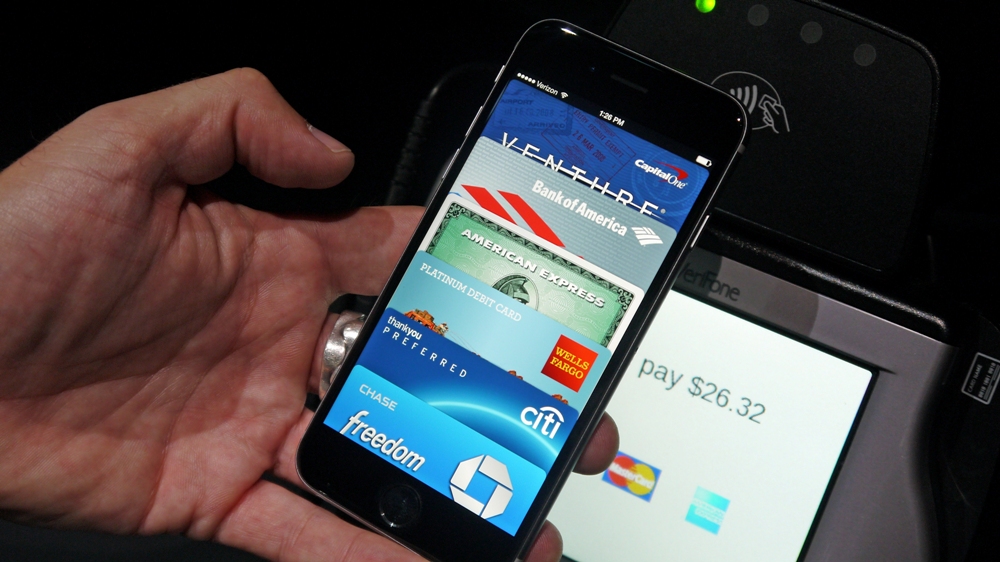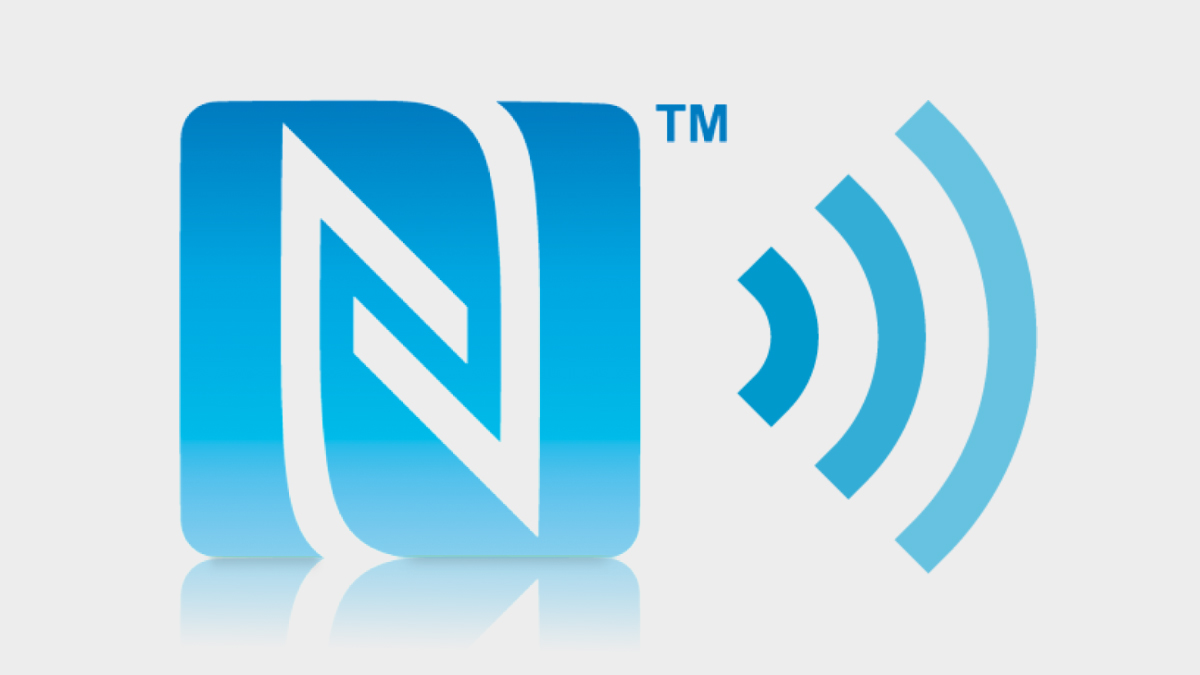Contact-less: NFC is good for payments but not much else
Beep beep… still coming through...

NFC (short for Near Field Communication) has long been tipped to change our lives for good, from how we shop to the way we exchange information.
While NFC is part of our daily routines, that's mainly in the form of contactless payments and, erm, toys – beyond that things are pretty limited. Weren't we promised more?
Google 'NFC' and you'll see there are all kinds of other ways startups and big brands are trying to make NFC happen. As of yet, the successful use cases are pretty rare.
For those unfamiliar with NFC, it's a type of wireless data transfer. It's able to detect and enable tech (within close proximity) to communicate without the need for additional forms of connection – no internet or Bluetooth required here.
- What is NFC? Everything you need to know
You'll find NFC in your contactless bank card, and in the same way that augmented reality has become synonymous with Snapchat filters, you'd be forgiven for thinking NFC is all about payments.
The thing is, the convenience it offers means there have been plenty of interesting applications and prototypes in the past, yet few seem to have had mainstream appeal.
NFC in 2016

If you define success by mainstream pick-up, then the most successful application of NFC has been in using our debit and credit cards for contactless payments.
Get daily insight, inspiration and deals in your inbox
Sign up for breaking news, reviews, opinion, top tech deals, and more.
Geoff Barraclough, Head of Proposition at EVO Payments International, told us: "It's taken some years to take hold, but now we're seeing £2bn per month spent on contactless cards in the UK and it's growing swiftly. Waitrose, for example, is now reporting 35% of transactions on contactless."
In London, meanwhile, the option to leave your Oyster card at home and use a bank card to tap in and out instead has had high adoption rates. According to TfL, more than 30 percent of all pay-as-you-go journeys were made with contactless cards.
But for many, NFC is synonymous with smartphones, and they're changing the way we pay too. Recent stats suggest those using the likes of Apple Pay are often signing up and trialling the service, introducing them to the benefits of paying contactless.
But, out of 20 people who sign up for Apple Pay, only one will actually continue to use the service afterwards, so drop-off rates are just as high.
NFC has been used a lot in the 'toys to life' gaming accessory space, which enables gamers to essentially move around small objects offline and have them remember gaming narrative and interact in the same way in the game.
Nintendo's amiibo and other NFC-enabled figurines from the likes of Disney's Infinity, and Activision's Skylanders, are great examples of how NFC can be applied far beyond payments, bridging the gap between gaming and real-life toys.
According to reports, Nintendo sold a staggering 24.7 million Amiibo figures during the last fiscal year, and those numbers are only expected to rise if the 'toys to life' trend continues to gain momentum – it's sustained consumer interest for a few years now, so there's no saying that won't continue.
As NFC is such a crucial element of how the figurines, work, behave and have such mainstream appeal, along with payments this proves the sustainability of this kind of tech.
Another application of NFC you might have heard of is NFC tags – stickers or dedicated tags created to let you interact with advertising, for instance. The latter has been stuck on widespread bus stops, but despite promising 'coming soon' advertising promotions that those savvy enough to tap on will get access to, the system has utterly failed to catch on.
Personal tags are also still, years after being introduced, a 'potential' tech. They should be amazing, letting you start music or fire-up car-specific functions when docking your phone in your vehicle, but it too hasn't caught on due to a complex set-up.
Many devices brandish the NFC logo, which means that by holding your smartphone up to them you'll be able to connect via Bluetooth much faster than by pairing devices manually.
And, while you may not have noticed that it's been baked into every iteration of Google's mobile OS since Android 4.0 Ice Cream, Android Beam is an app designed to make the most of NFC, enabling the sharing of pretty much anything, whether it's a contact card, picture, web page or YouTube link.
What does the future hold for NFC payments?

When it comes to the near future of NFC, we can expect to see contactless payments taking off even more, in terms of both consumer and retailer adoption rates. In fact, recent data from Juniper Research suggests the global value of mobile and wearable contactless payments is expected to reach $95 billion annually by 2018, up from less than $35 billion last year.
All the experts we spoke to agree that for NFC to have staying power in either phones or contactless cards, it needs to make the in-store retail experience better, or make paying more convenient.
EVO Payments' Barraclough argues that this is why smartphone payment systems haven't yet taken off to the extent that was expected.
"Apple Pay is clever, but usage is low as it's slower and less convenient than tapping a plastic bank card. It's the same for Android Pay and Samsung Pay," he says.
"These services are wonderful for making in-app payments but don't improve the customer experience in-store."
Considerable work needs to be put into either improving this in-store experience, or changing the user journey so people don't fall back into their old ways.
Jeanette Tena-Jones, VP, Payments and Loyalty at MBNA, says one of the big things needed in order for contactless payments to really take off is to get those who aren't early adopters to feel comfortable with a different payment method – and give them an incentive to try it out.
"Future solutions will need to provide things beyond payments to become mainstream," she says. "Integration with loyalty and membership cards is the clear choice, but that won't be enough."
When it comes to smartphone payments, we've already seen Apple introduce a £5 iTunes gift card for those who use Apple Pay because it's so eager to make the contactless payment system second nature. But users ingrained in their habits will likely need more of a push.
Losing the leather
Another answer, Tena-Jones suggests, would be to add NFC tech to a wider 'digital wallet' proposition.
She says: "Our hectic lifestyles [mean] we might all like to have solutions that allow us to… read, chat, browse, play and shop, so NFC payments will need to be part of a wide digital wallet proposition to break some of the barriers and achieve mass adoption in the future."
The idea of the digital wallet has been around for decades, and NFC has the potential to activate it – imagine being able to send sensitive medical data, financial information or just trade Pokemon by tapping phones together, confirmed by your own biometric data.
The convenience would be the biggest draw – but the issue is making sure the systems exist to enable the tech, which feels like an impossible target right now.
Having said that, right now financial experts are agreed that it's still the best kind of tech for payments. So there's no reason why it won't continue to be the go-to tech for transactions.
Barraclough added: "There's no simpler way to pay [than contactless], the technology is tested, deployed and globally interoperable.
"Your contactless bank card will work in Australia just as easily as Aberdeen. Anything involving mobile phones, apps, beacons, check-ins and two-factor security will be slower and less elegant than this."
What about wearables?

Now that the Apple Watch allows you to pay with Apple Pay, and with Fitbit having bought wearable payments tech from financial tech startup Coin earlier this year, wearables are becoming a viable way to pay on the go, offering convenience by always being around.
Fitbit is yet to reveal official details, but given that it still sells more wearables than any other company (yep, including Apple) this could be the tie-in that will make using wearables to pay for stuff take off in a big way.
And in the future NFC could well become part of your body, rather than being attached to a device. Earlier this year, Microsoft Research and MIT's Media Lab published details of Tattio, a temporary tattoo that contains NFC tags that can act as your digital identity – if people started to implant the chip onto their person, the ecosystem would begin to flourish pretty swiftly.
The future
If NFC is going to grow in usage, it'll need to be integrated with enough daily transactions for it to become a 'mandatory' technology in our lives.
And there are signs that it's moving into new areas: for instance, a number of hotel chains are enabling guests to get into their rooms with their phones using NFC.
It's similar to contactless payments – ditch that swiping room key (or actual key) and use your phone instead.
The huge appeal here is that, if it's done right, you can bypass the front desk entirely. Even those wary of using their phones for paying or getting on flights might like the appeal of cutting down on queueing, and having to go through a lengthy hotel check-in process after a long-haul flight.
If that benefit could be marketed well – and if the tech works seamlessly – these simple security applications of NFC could become second nature as we travel.
Enhancing the retail experience
One space in which NFC is often peddled out as 'revolutionary' is in product packaging – but it doesn't seem to be that way right now. Brands pushing NFC-loaded packaging as giving consumers a 'better experience' by allowing them to find out more about their products hardly seems futuristic.
It would be cool if tapping a jar of coffee to our smartphone triggered the kettle to start boiling – but that would require a unified system that every device works to, and we're a long way from that.

A contactless future?
What we need are NFC solutions that are connected to wider strategies, so they feel less like standalone solutions and more integral to our day-to-day lives.
To be properly part of our future, NFC needs to become interwoven with smart homes and connected ecosystems, where it's currently just a novel accessory, beyond payments.
All the experts we spoke to agreed that NFC payments would become more successful when the 'digital wallet' becomes a reality. The technology is in a strange position – a mainstay in smartphones for years, but (beyond contactless payments, which still aren't any more useful than a bank card) largely a luxury addition.
Barraclough doesn't imagine contactless payments will be on the way out any time soon, nor gravitate towards being only on smartphones.
"Human behaviour changes at a glacial pace when it comes to payments," he says. "I fully expect us still to be using contactless bank cards in 10 years' time.
But he agrees that the future of NFC calls for some streamlining and integration, so we could use it for all manner of purposes and, crucially, not have to worry about carrying anything extra around.
"However, the card credentials will be embedded in our clothing and accessories so they'll be no need to take a wallet when you go for a jog," he adds.
"These credentials will also be used for access control at home and work, as well as authenticating us for gym membership, library books and a host of other everyday uses."
The future? It still feels like NFC is being endlessly trialled years after launch, and when it comes to mainstream adoption, gaming and payments are the only two spaces that actually seem to have short-term potential.
The biggest hurdle doesn't seem to be the tech itself, but convincing people to try it and, crucially, changing their behaviour so they persevere with it, and don't fall back on old-school solutions.
Becca is a contributor to TechRadar, a freelance journalist and author. She’s been writing about consumer tech and popular science for more than ten years, covering all kinds of topics, including why robots have eyes and whether we’ll experience the overview effect one day. She’s particularly interested in VR/AR, wearables, digital health, space tech and chatting to experts and academics about the future. She’s contributed to TechRadar, T3, Wired, New Scientist, The Guardian, Inverse and many more. Her first book, Screen Time, came out in January 2021 with Bonnier Books. She loves science-fiction, brutalist architecture, and spending too much time floating through space in virtual reality.
